- | 9:45 am
Social media is a toxic cesspool. This new app takes a different approach
Sick of Twitter beating you down? Somewhere Good wants to build you back up.

Elon Musk got everyone worked up about Twitter, but the truth is, the social media platform has been toxic for as long as it has existed. Spending time on Twitter wears on you, whether you’re chasing likes or dodging harassment. I can’t remember the last time I logged into any social media app and felt happier afterward.
Frankly, I’m not sure it’s a solvable problem, but I have enjoyed my time touring the invite-only app Somewhere Good. Developed by the team behind Ethel’s Club—a work and social club for people of color that recently evolved into a wellness platform—Somewhere Good has raised $3.75 million in investment to build a new social network focused on healthy conversations for Black and other underrepresented users.
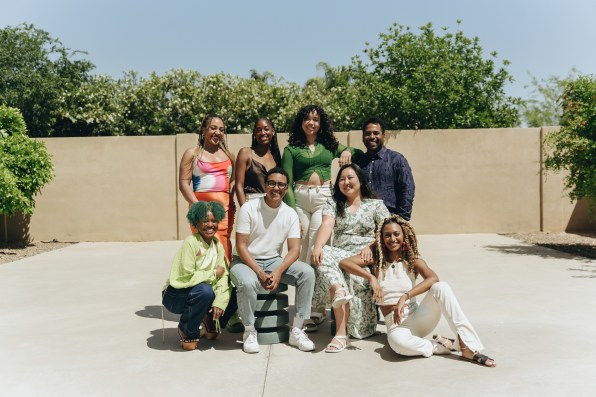
[Image: Somewhere Good]
It’s one of many attempts at overhauling social media to be less corporate and more satisfying, ranging from Yo to Ello. Somewhere Good stands out in its design, which was inspired by everything from early web aesthetics to Black culture.
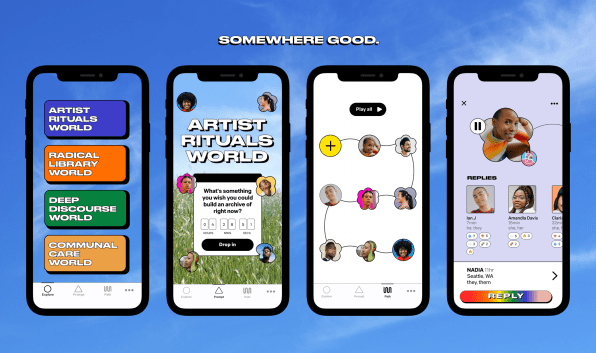
[Image: Somewhere Good]
Just about every component inside Somewhere Good offers a remarkably different experience than the social media apps you’ve tried before.
“We specifically designed the experience to move against hierarchy in many different ways. There are no likes, no followers. It isn’t an infinite scroll. There are no profiles, so there’s no way to see those types of statistics,” says head of design Annika Hansteen-Izora. “What does it look like if you have a social media app that isn’t working with commodification and self-branding but instead, what can an online space look like that’s against hierarchy?”
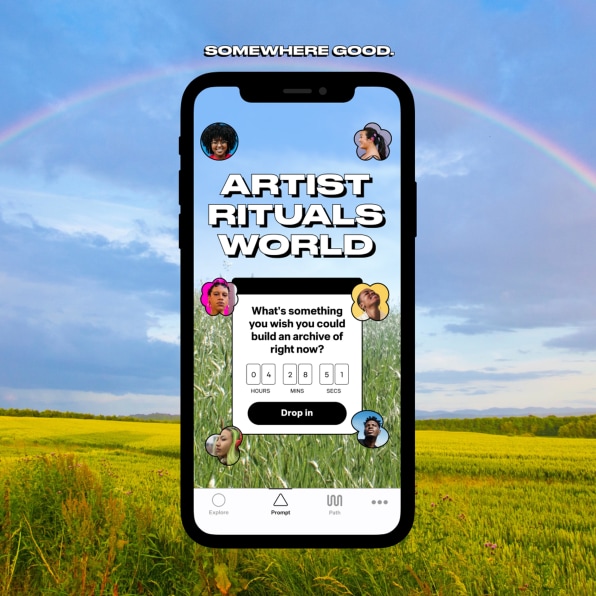
[Image: Somewhere Good]
It starts with a quirky user interface that was inspired as much by early internet aesthetics as it was by plants in nature. And it continues into a core experience that, instead of featuring one endless feed, begins with a question to lead a broader discussion like, “How do you stay present?”
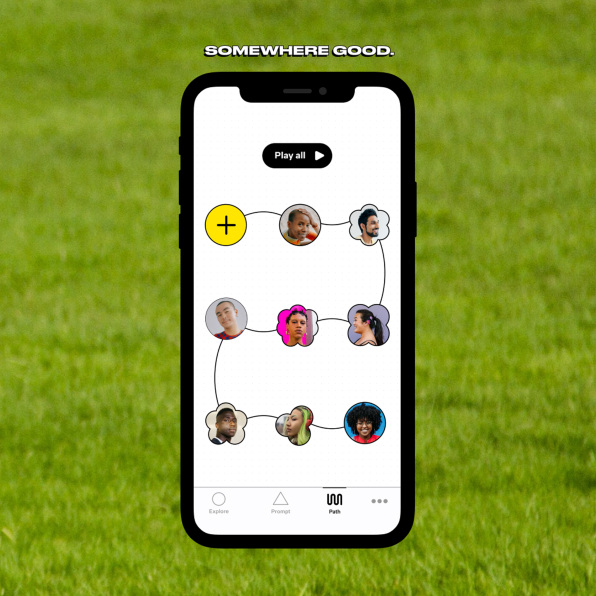
[Image: Somewhere Good]
Up to 24 people can answer the daily prompt with their recorded voice. Why a recording? Because oral traditions are part of Black culture, and voices are inherently intimate. (Fun fact: While Clubhouse has garnered much of the credit for speech-based social media, Black designers mining insights from their communities drove the development of Spaces at Twitter before its release.)Once they answer a prompt, the user’s photo becomes a new link in a chain that you can tap on and listen to. Without the verification of blue checkmarks, everyone appears as equals. However, if people choose to respond directly to someone’s message (and there is no limit to how many people can do this), their avatar will evolve from a circle to a petaled flower. The more responses, the more petals, indicating a more active conversation.

[Image: Somewhere Good]
“It’s like you’re walking a path of different flowers that are growing as people add their own seeds to the conversation,” says Hansteen-Izora, who likens healthy conversations to thriving gardens but also doesn’t pigeonhole the approach to any single metaphor.
“I was inspired by Neopets, Club Penguin, Microsoft Paint,” Hansteen-Izora says. “I was inspired by these online spaces that aren’t so constrained, which is how I see the design of social media apps today. They’re very minimal. The goal of the design of major social media platforms today is to make everything as digestible as possible, to put it all into a very clean template, which I can understand! But I was inspired by the early playfulness of the internet, where it did feel like we’re in a new age and anything is possible.”
By design, the interface—coupled with the nature of voice memos—causes you to slow down and listen to other people as they unpack their thoughts as mini monologues. It’s an experience that works at a beta scale, consisting of a small, curated group of testers. And to scale it up will naturally invite more problems, although no one I’ve seen on the platform is there to start a fight.
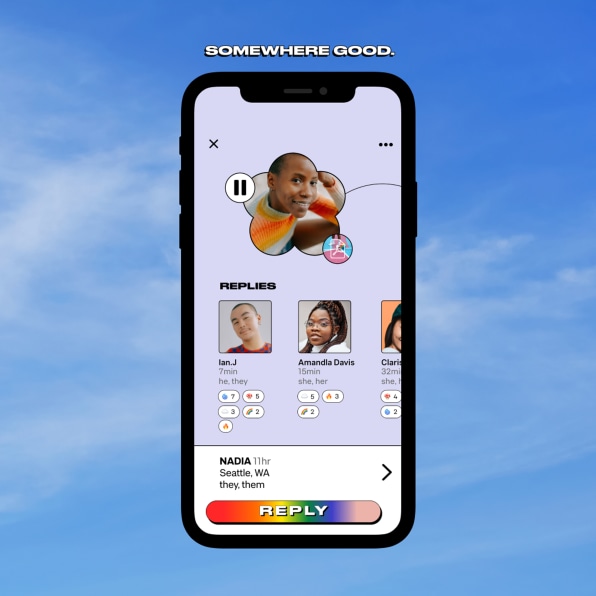
[Image: Somewhere Good]
The team is thinking about how to solve some of social media’s most insidious problems at scale. A large topic is ensuring that ideas have proper attribution. “Black culture has influenced so much of internet culture, and yet that citation is often erased,” Hansteen-Izora says. “So how can we design citation and [an] archive in this space that actually ensures people are credited for their knowledge and contributions?”The biggest open question is about monetization. Somewhere Good has no subscription fee or advertisements, so how will it make money? When I posed the question to Naj Austin, founder and CEO of Somewhere Good, she responded: “We have some exciting ideas for monetization down the line but right now we’re hyperfocused on building a strong platform that can scale users and increase retention.”
While that approach is common in the industry, it also comes with a cost—ranging from Meta’s invasive ad targeting to Instagram’s ever-shifting pile of ads and stores in your feed. Then again, perhaps Austin realizes that for any social media platform to become a successful business, it needs users as desperately as it needs ideals. And at the moment, Somewhere Good has the ideals down pat.




































